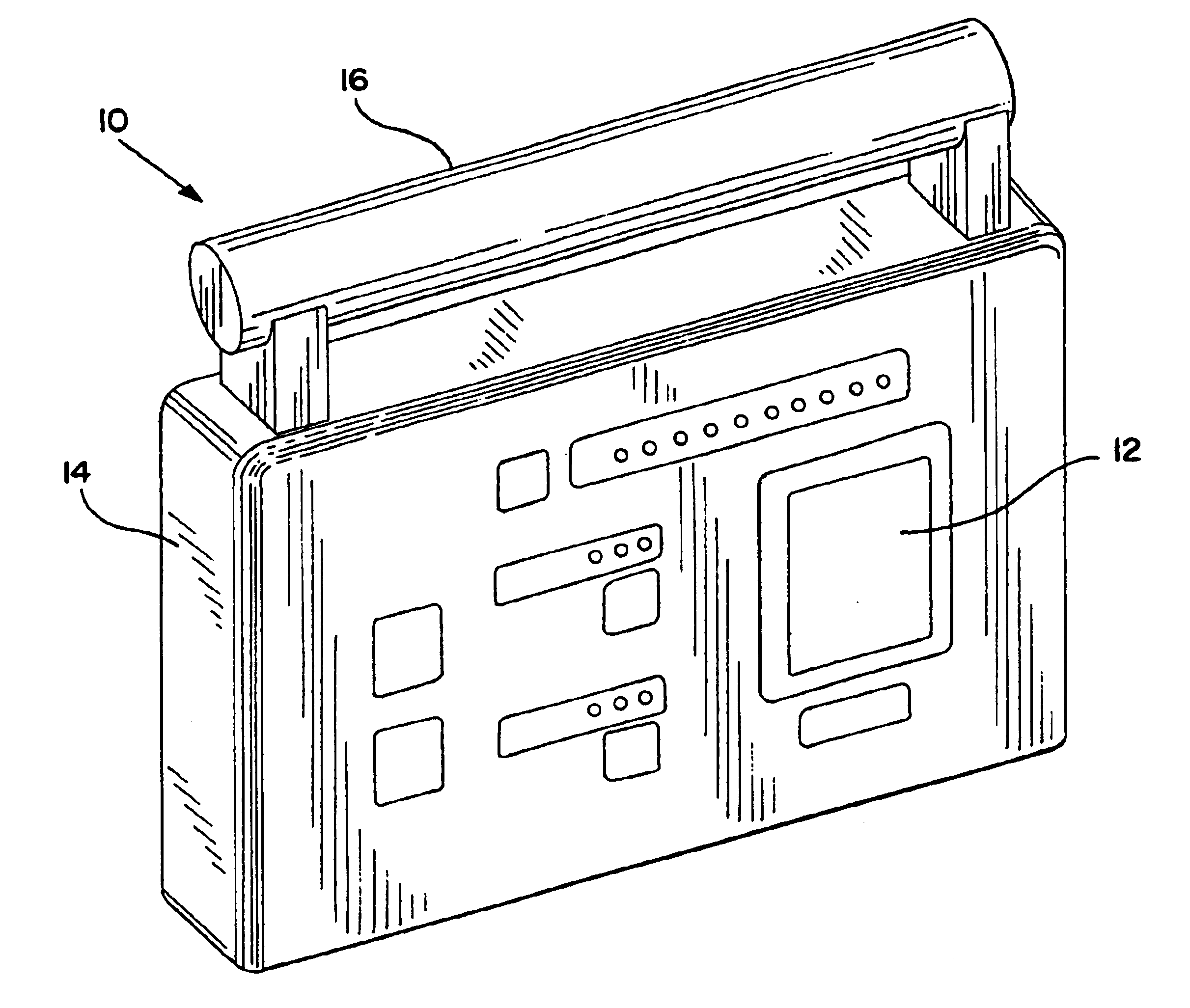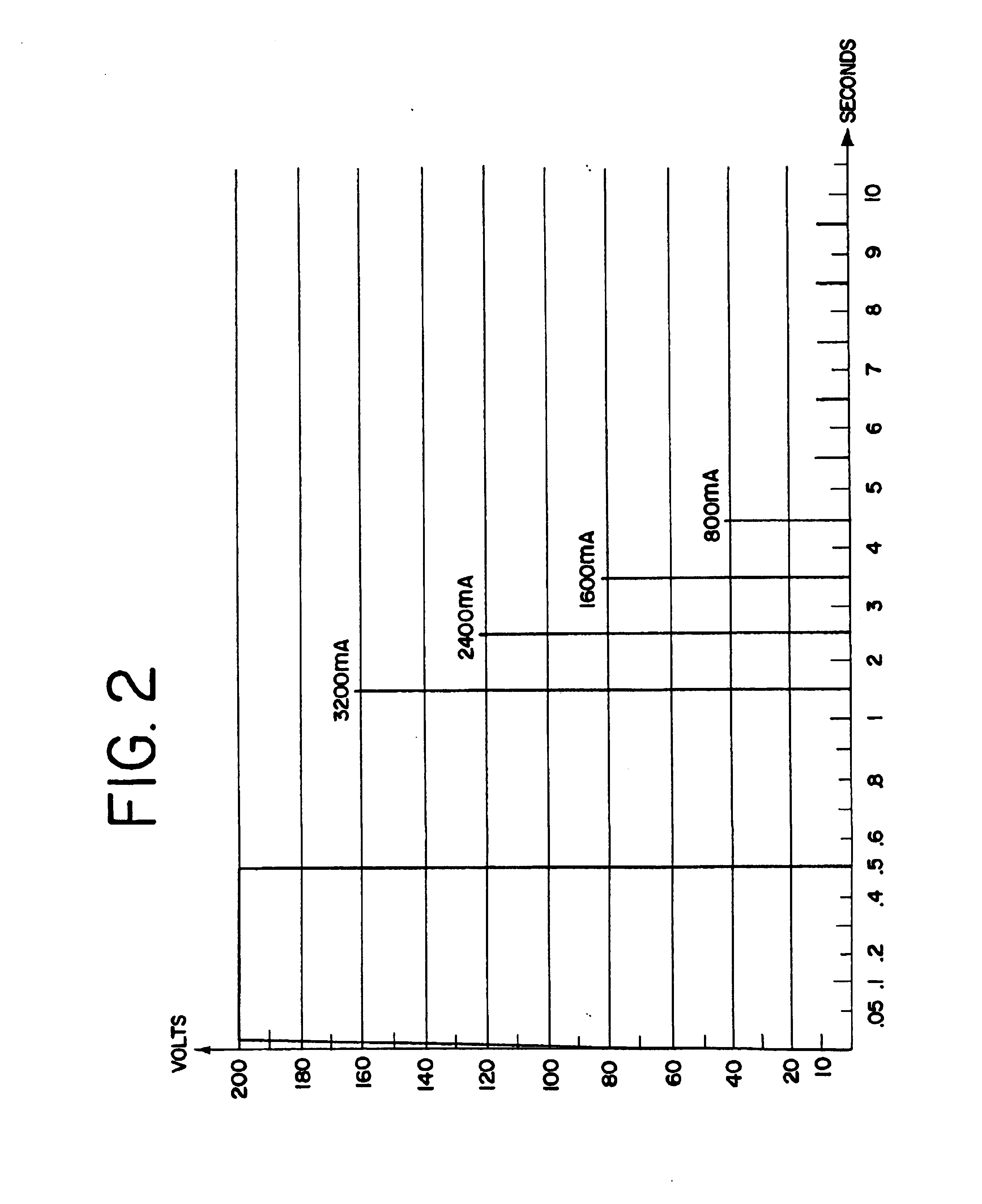Method and apparatus for myocardial control
a myocardial and heart rhythm technology, applied in the field of myocardial control, can solve the problems of more likely death, all systems of the human or animal body at risk, and injury to the patien
- Summary
- Abstract
- Description
- Claims
- Application Information
AI Technical Summary
Benefits of technology
Problems solved by technology
Method used
Image
Examples
example
For example, the user may choose the waveform in FIG. 14 after testing the patient's impedance and choosing the appropriate settings on the device to provide cardiac paralysis during surgical treatment. First, waveform shape selection is chosen for the desired shape. Second, the duration of cardiac freeze is set to 5 seconds. Waveform designate is adjusted in height, width, and refractory time to program the specific parameter of the waveform desired. Height is adjusted to 70 volts, width is adjusted to 40 milliseconds, and refractory time is adjusted to 3 milliseconds. With these settings, the waveform of FIG. 14 is continually applied for 5 seconds producing 5 seconds of paralysis of the heart muscle.
PUM
 Login to View More
Login to View More Abstract
Description
Claims
Application Information
 Login to View More
Login to View More - R&D
- Intellectual Property
- Life Sciences
- Materials
- Tech Scout
- Unparalleled Data Quality
- Higher Quality Content
- 60% Fewer Hallucinations
Browse by: Latest US Patents, China's latest patents, Technical Efficacy Thesaurus, Application Domain, Technology Topic, Popular Technical Reports.
© 2025 PatSnap. All rights reserved.Legal|Privacy policy|Modern Slavery Act Transparency Statement|Sitemap|About US| Contact US: help@patsnap.com



